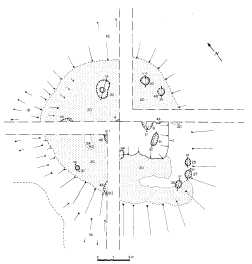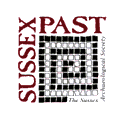Sussex Archaeological Collections: Relating to the history and antiquities of the counties of East and West Sussex
Sussex Archaeological Society, 2000. (updated 2022) https://doi.org/10.5284/1000334. How to cite using this DOI
Data copyright © Sussex Archaeological Society unless otherwise stated
This work is licensed under the ADS Terms of Use and Access.
Primary contact
Jaime
Kaminski
Sussex Archaeological Society
Barbican House
169 High Street
Lewes
BN8 1YE
Resource identifiers
- ADS Collection: 285
- DOI:https://doi.org/10.5284/1000334
- How to cite using this DOI
Evidence of Sussex prehistoric ritual traditions : the archaeological investigation of a Bronze Age funerary monument situated on Baily's Hill near Crowlink, Eastbourne
by Christopher Greatorex
with major contributions by
Chris Butler and
Sue Hamilton

During the summer of 1998, a prehistoric monument located on Baily's Hill, near Crowlink, East Sussex, was totally excavated in advance of its impending destruction through coastal erosion. The investigation undertaken by the University College London Field Archaeology Unit established that a number of cremation pits cut into an area of natural chalk demarcated by a shallow, possibly encircling ditch, represented a formative phase of Late Neolithic/Early Bronze Age burial at the site. No evidence for an in-situ 'barrow' or capping contemporaneous with such activity was discovered. However, all the recorded burials, including the partial remains of an adult male inhumation, were covered with an oval-shaped cairn encompassing a typical later Bronze Age assemblage of over 15,000 humanly-struck flints. The proposed date of this upstanding structure was supported by the associated presence of Late Bronze Age pottery. Yet Neolithic, Beaker and Early Bronze Age sherds were also recovered from the body of the mound. It would thus appear that residual material derived from previous activity on the downland ridge had been scraped up and incorporated into the cairn matrix. Clearly, the Crowlink monument had retained, or at least recaptured, a position of ritual significance within the local landscape many years after its period of initial use.





